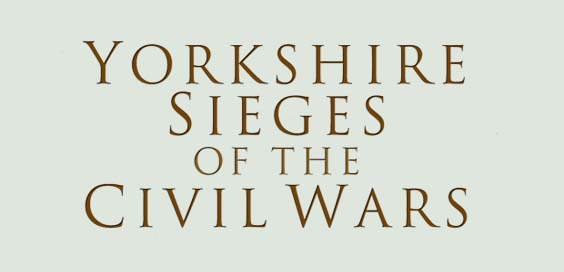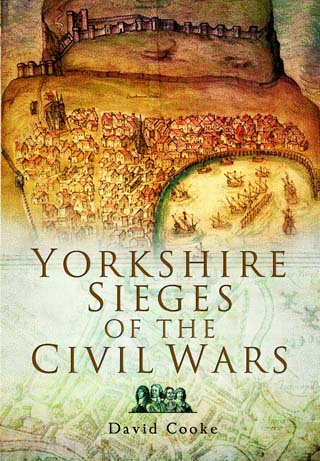Yorkshire Sieges of the Civil Wars by David Cooke – Review

By Sandra Callard
During the Civil War from 1642 to 1651, battles, skirmishes and general unrest permeated throughout England, Scotland and Wales. Writers have often concentrated on events in central and southern parts of England, but this latest book on the period covers England’s largest county, Yorkshire, and the sieges which took place in this area over almost a decade.
The cut and thrust of bloody battle was an essential part of warfare, but without the successful siege of Harfleur in 1415, Henry V’s famous victory at Agincourt would never have happened. Sieges were an essential ‘softening-up’ of the enemy. An area of land won, and a morale-booster for the attacking troops when the sieged city surrendered. The populace sheltering behind the city walls suffered terribly from starvation, bombardment of both cannon and fire, and lack of water as the rivers supplying them were dammed.
 Many Yorkshire towns suffered from sieges during the English Civil War, although a number also managed to withstand them, sometimes even driving off the attackers. It is surprising to see the large number of towns, still standing today, which suffered sieges. Some from troops under the Royalist standard and some from the Parliamentarians, according to their professed commitments.
Many Yorkshire towns suffered from sieges during the English Civil War, although a number also managed to withstand them, sometimes even driving off the attackers. It is surprising to see the large number of towns, still standing today, which suffered sieges. Some from troops under the Royalist standard and some from the Parliamentarians, according to their professed commitments.
“An intelligent precision and authority”
The city of Hull, which came out for the Parliamentarians, survived two sieges, as the city walls built by Henry VIII circled three sides of the city. The fourth side was bordered by the River Humber, which was too long to be adequately covered by the Royalists, and supplies continually got through to the besieged city.
The back-breaking techniques and skills of sieging are shown, from tunnelling through brick, stone and earth to the equally gruelling task of moving tons of earthworks to divert rivers, sometimes to cut off water supplies, and occasionally to flood the town. Tunnels were crawled into on completion and fires set to destroy wooden props or, more dangerous still, gunpowder lit inside to bring down the walls. The tunnellers were the equivalent of our modern-day heroes, the Bomb Disposal Units.
This is a fast-moving and highly informative book, covering a little-known area of the Civil War, but challenging in the complexity of the politics of the era. Author David Cooke is scrupulous in his naming of the people involved on both sides, in each case of sieging, from the King and Cromwell down. He describes the plot, the action and the outcome of each town’s siege with an intelligent precision and authority, which makes the tenacity required to complete the book all the more rewarding.
‘Yorkshire Sieges of the Civil Wars’ by David Cooke is published by Pen and Sword Books









